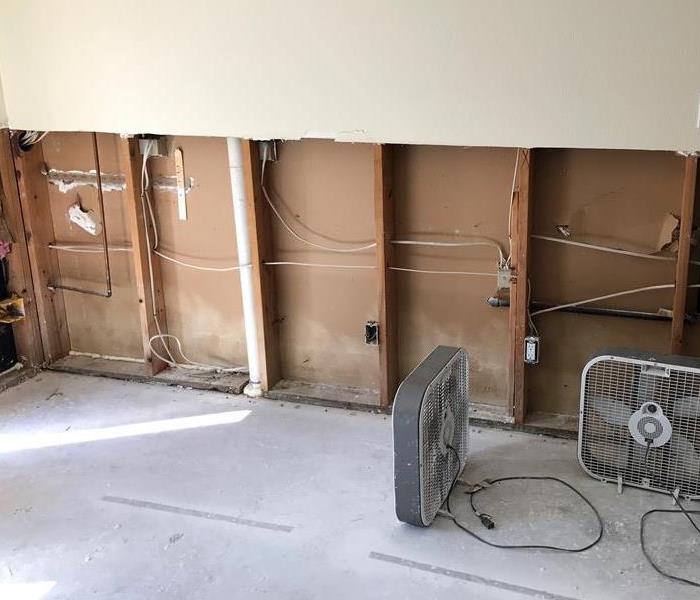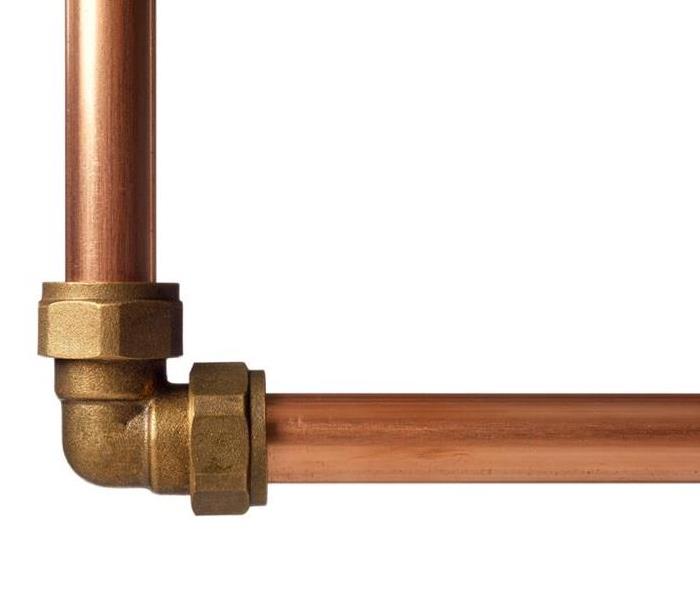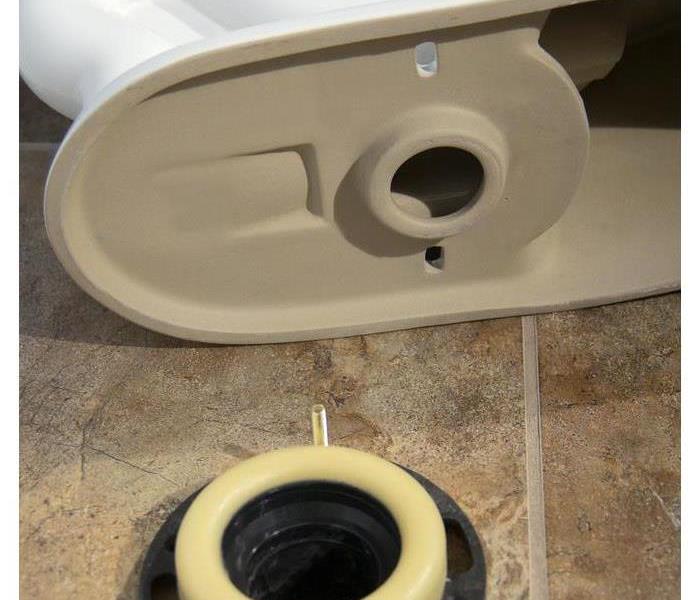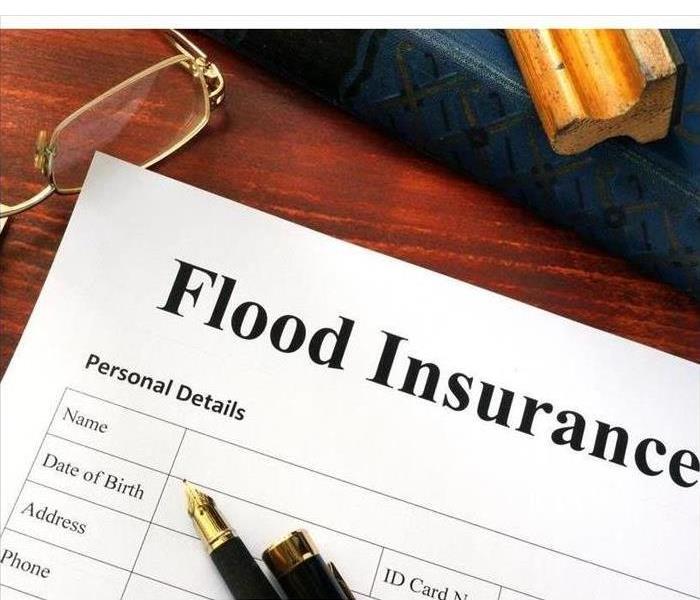Recent Water Damage Posts
Unveiling the Art of Assessment: How Restoration Professionals Evaluate Structural Water Damage
2/22/2024 (Permalink)
When faced with the aftermath of water damage, it's crucial to understand the extent of the destruction to devise an effective restoration plan. In this blog post, we will delve into the intricate process of how restoration professionals assess structural water damage. By gaining insights into their evaluation techniques, you'll grasp the importance of a thorough assessment in achieving a successful restoration.
Initial Visual Inspection
Restoration professionals begin by conducting a visual inspection to identify visible signs of water damage. They look for discoloration, staining, warping, or any anomalies that indicate moisture presence. This primary assessment helps in determining the general areas affected and forms the foundation for further investigation.
Moisture Mapping and Detection
Utilizing specialized tools such as moisture meters, infrared cameras, and hydrometers, restoration experts perform a detailed moisture mapping and detection process. These tools allow them to identify hidden pockets of moisture within the structural elements, including walls, floors, and ceilings. Moisture mapping helps determine the degree of saturation and guides the restoration professionals in creating a comprehensive plan.
Damage Classification
Based on the findings from the moisture mapping, restoration professionals classify the water damage into various categories. This classification includes assessing the level of contamination, the source of the water (clean water, gray water, or black water), and the affected materials (porous or non-porous). This categorization significantly impacts the restoration process and any necessary safety precautions.
Structural Integrity Assessment
To ensure the safety and stability of the structure, restoration professionals thoroughly assess the integrity of affected materials. They look for signs of warping, swelling, deterioration, or compromised structural elements. Through this evaluation, they determine whether materials can be salvaged or need replacement and identify any potential structural vulnerabilities.
Mold and Secondary Damage Inspection
Understanding the potential risks associated with water damage, restoration professionals conduct thorough inspections to identify the presence of mold growth or other secondary damage. They visually inspect the affected areas, take air samples, or conduct mold testing to determine the extent and type of mold. Early identification of mold allows restoration experts to implement proper remediation techniques.
Documentation and Restoration Plan
After completing the assessment process, restoration professionals compile detailed documentation of their findings. This includes photographs, moisture readings, damage classification, structural integrity assessment, and mold inspection results. Based on this comprehensive assessment, they develop a restoration plan tailored to the specific needs of the damaged structure.
The assessment of structural water damage by restoration professionals goes beyond the surface, delving into the intricacies of moisture detection, categorization, structural integrity analysis, and mold inspection. Their expertise and comprehensive evaluation provide the foundation for an effective restoration plan, helping homeowners regain their property's safety, functionality, and peace of mind.
Steps to Take When Your Basement Floods: How to Respond Quickly and Effectively
10/17/2023 (Permalink)
 Flooding can be stressful, give a professional a call for proper restoration and prevention of secondary damages.
Flooding can be stressful, give a professional a call for proper restoration and prevention of secondary damages.
A basement flood can be a homeowner's nightmare, causing extensive damage and creating a stressful and overwhelming situation. However, a quick and effective response can minimize the damage and prevent potential health and safety hazards. In this blog post, we will outline the crucial steps to take when your basement floods, helping you respond promptly and effectively.
Safety First
- Turn off electricity: Turn off the main power supply to prevent electrocution.
- Watch for electrical hazards: Avoid standing water if electricity is still on.
- Check for gas leaks: Smell for gas leaks and evacuate the property immediately if you detect a leak.
Stop the Water Source
- Identify the source of the water: Determine the source of the water, such as a burst pipe, sewage backup or heavy rainfall.
- Stop the source: If possible, stop or divert the flow of water to prevent further flooding.
- Document Damage
- Take photos and videos: Document the damage using photos and videos for the insurance claim.
- Record details: Record the time, date, and the extent of the damage.
Contact Professionals
Call water damage restoration professionals. Contact a professional restoration company immediately to prevent further damage and ensure proper restoration. Contact insurance provider. Notify your insurance provider and provide them with details of the damage, photos, and videos.
Begin Cleanup
- Remove water: Use a wet-dry vacuum, mops, or towels to remove standing water.
- Dry out the area: Use fans, dehumidifiers, and open windows to dry out the area and prevent mold growth.
- Disinfect affected areas: Disinfect all affected areas with bleach or another disinfectant to prevent bacteria and mold growth.
Prevent Future Flooding
- Fix the issue: Repair the source of the problem whether its a burst pipe, faulty plumbing or a drainage issue.
- Waterproofing: Consider waterproofing your basement walls to prevent future flooding.
In conclusion, basement flooding is a stressful and overwhelming experience, but quick action can prevent further damage and ensure proper restoration. Follow these six crucial steps to safeguard your property and your family's health. Remember to prioritize safety first, stop the source of the water, document damage, contact professionals, begin the cleanup promptly, and prevent future flooding. With the help of professional restoration and proper prevention measures, you can recover from a basement flood and prevent it from happening again.
A Guide to Navigating the Water Damage Claims Process Successfully
7/27/2023 (Permalink)
Water damage is a common and often unexpected issue that homeowners and business owners may face. When water wreaks havoc on your property, filing a water damage insurance claim becomes essential to cover the costs of restoration and repairs. However, the process of navigating water damage insurance claims can be complex and overwhelming. In this blog, we'll provide a comprehensive guide to help home and property owners successfully navigate water damage insurance claims, ensuring a smoother and more efficient path to recovery.
Contact Your Insurance Provider Immediately
As soon as you discover water damage, contact your insurance provider promptly. Report the incident and provide them with all the necessary details to initiate the claim process.
Document the Damage
Before you start any cleanup or restoration, document the water damage thoroughly. Take photographs and videos of the affected areas, damaged belongings, and any visible signs of water intrusion.
Prevent Further Damage
Take reasonable steps to prevent further damage, such as shutting off the water source, removing excess water, and boarding up damaged areas. However, avoid major repairs until the insurance adjuster assesses the damage.
Understand Your Policy Coverage
Review your insurance policy carefully to understand the coverage and limitations related to water damage. Different policies may have varying coverage levels for different types of water damage events.
Report All Damages
Be thorough in reporting all damages caused by water, even those that may seem minor initially. Hidden damages or delayed effects can become more apparent over time, and it's crucial to have them documented from the start.
File the Claim Promptly
File your water damage insurance claim as soon as possible. Delays in filing can lead to complications and may hinder the approval process.
Cooperate with the Insurance Adjuster
When the insurance adjuster visits your property to assess the damage, be cooperative and provide them with all relevant information. Answer their questions honestly and share the documented evidence of the damage.
Obtain Multiple Repair Estimates
To ensure a fair assessment of the repair costs, obtain multiple repair estimates from reputable contractors. These estimates will help in negotiating the claim settlement if necessary.
Keep Detailed Records
Maintain a detailed record of all communication with your insurance company, including phone calls, emails, and letters. Document the dates, times, and individuals you speak with during the claims process.
Review the Claim Settlement
Once the insurance company provides a settlement offer, review it carefully to ensure it covers all the necessary repairs and damages. If you have any concerns, discuss them with the insurance company.
Successfully navigating a water damage insurance claim requires preparedness, documentation, and understanding of your insurance policy. By promptly reporting the damage, documenting all damages thoroughly, and cooperating with the insurance adjuster, you increase the likelihood of a smoother and more efficient claims process. Remember, clear communication and keeping detailed records throughout the process are key to ensuring a successful water damage insurance claim. By following this guide, you can navigate the claims process with confidence and focus on restoring your property to its pre-damage condition.
The Importance of Regular Pipe Inspections: Protecting Your Home or Business from Plumbing Disasters
3/11/2023 (Permalink)
 Regular pipe inspections are good for protecting your home from future pipe breaks.
Regular pipe inspections are good for protecting your home from future pipe breaks.
Regular pipe inspections are essential for maintaining the health and safety of your home or business. Pipes are an integral part of any building's plumbing system, and any issues with them can cause significant damage to your property, resulting in expensive repairs and even potential secondary damages. In this blog post, we will discuss why regular pipe inspections are crucial for both homes and businesses.
Prevention of Blockages
One of the primary reasons why regular pipe inspections are essential is to prevent blockages. Over time, pipes can become clogged with hair, grease, food particles, and other debris. These blockages can restrict the flow of water, leading to slow drainage, and even complete blockages. Regular inspections can detect these blockages early and allow for their removal before they cause any significant damage.
Avoiding Water Damage
Leaks and burst pipes can cause significant water damage to your property, leading to costly repairs and even health hazards such as mold growth. Regular inspections can identify any leaks or potential weaknesses in the pipes before they cause water damage. In addition, inspections can detect any corrosion or rusting of pipes, which can weaken them and lead to burst pipes.
Maintaining Water Quality
Another critical reason why regular pipe inspections are important is to maintain water quality. Over time, pipes can become corroded, leading to the release of harmful chemicals into the water supply. Regular inspections can detect any corrosion or damage to pipes and allow for the replacement of any affected pipes, ensuring that the water supply remains safe and healthy for consumption.
Cost Savings
Regular pipe inspections can save you money in the long run by preventing major repairs and water damage. Early detection of potential problems can allow for timely repairs, preventing any further damage to your property. Additionally, regular maintenance of pipes can extend their lifespan, reducing the need for expensive replacements.
Compliance with Regulations
In addition to the above benefits, regular pipe inspections are often required by law to comply with building and safety regulations. For example, businesses in the food industry are required to have regular inspections to maintain food safety standards.
In conclusion, regular pipe inspections are essential for maintaining the health and safety of your home or business. They can prevent blockages, avoid water damage, maintain water quality, save money, and ensure compliance with regulations. Don't wait for a plumbing emergency to occur; schedule regular pipe inspections to ensure the proper functioning of your plumbing system and avoid costly repairs.
How Do I Install a New Toilet?
11/9/2022 (Permalink)
 It's time to install your new toilet.
It's time to install your new toilet.
Installing a New Toilet
Don't be afraid of the toilet. It's an essential part of your home, and it doesn't have to be complicated. In fact, installing a new one is easy — as long as you're careful and follow these steps.
Turn off the water supply
The first step to installing a new toilet is to turn off the water supply. If you don't know where your water shutoff valve is, this is a good reason to call a plumber or handyman with experience. The process of turning off the water supply involves shutting off pipes that are running through your walls, so it's not something you want to mess up if you're unfamiliar with plumbing.
Disconnect the water supply line
This can be done by shutting off the main valve or turning off individual shut-off valves for each fixture.
Next, remove the supply line from the valve using a wrench and disconnect it from your toilet by removing 2 screws as needed on either side of where it connects at its base (most toilets will have 4 screws). Make sure you have something handy such as a bucket or large bowl to catch any water that may leak out during this process!
Drain the tank and bowl by holding down the handle and flushing
Now that you've done all the prep work, it's time to install your new toilet. First, drain the tank and bowl by holding down the handle and flushing. Use a bucket to catch water as it drains into the bowl, so you don't have to mop up a mess. If you're still having issues with leaking after doing this step once or twice, try re-tightening any bolts/screws that were loose before as well as re-adding additional washers if needed.
Remove old toilet
If there is a wax ring, remove it by prying it up with a screwdriver. Then use a putty knife to scrape away any remaining wax from around the base of your new toilet. If your toilet has been glued to the floor, use a pry bar to lift it up and off its flange.
- Unbolt or remove bolts on bottom portion of tank and set aside for re-use if possible (if not, don't worry about removing them now)
- Unbolt or remove bolts on top portion of tank using ratchet wrench and socket
Inspect and clean the closet flange
The closet flange is a metal ring that fits in the drainpipe, allowing you to mount the new toilet on top of it. The closet flange should be accessible from below where you plan to install your new toilet. You can do this by lifting on the wax ring on top of your existing toilet or by removing it entirely if it's not too firmly stuck down (if so, use a flathead screwdriver).
Once you take off that section of wax ring, look at what's underneath: You're looking for damage or corrosion around any seams between different pieces of metal—this can mean that part won't seal properly or could cause leaks. If there's visible corrosion or dents, replace that piece before proceeding with installation.
Install new wax ring and toilet
The wax ring is what seals the toilet to the floor. If you are replacing an old toilet, you need to buy a new wax ring and install it before installing your new toilet.
You can buy wax rings at any hardware store.
Toilet Installation
Toilet installation isn't rocket science, but it's not simple either. Follow these steps to do it right!
1. Ask for help. If you're installing a new toilet in your Providence, RI home, your best option is to ask a friend or family member who knows how to install toilets well. They can give you advice on what tools and materials to use, how much time the project will take, and whether they'll be able to help with any of the work itself (or if they'd like payment up front).
2. Don't try to do everything yourself. You may have seen videos on YouTube where people install their own toilets without any assistance - but don't take this as an example of something that can be easily done by most people!
3. Take your time: Follow all instructions carefully so that everything goes smoothly.
Even if you've never installed a toilet before, we hope this guide has shown you that it's not too hard of a job. Just be sure to follow these steps and you'll be done in no time!
When Does Your Insurance Cover a Flood?
7/18/2022 (Permalink)
 Consider purchasing flood insurance
Consider purchasing flood insurance
When Is a Flood Covered by Your Insurance?
Experiencing a disaster at home can be devastating. Flooding is one of the most common and damaging incidents that Elmwood, RI, homeowners encounter. There are some cases where your homeowner's insurance will cover the damage of a basement flood and other water damage. Other situations require that you turn to secondary flood insurance to file a claim.
What Your Homeowner's Insurance Covers
You purchase homeowner's insurance to help you when accidental damage occurs in your home and on your property. This applies to a flooded house as well. If there is sudden, unintentional water damage, your insurance should step in and help with repair and replacement costs. Some examples include:
- A broken pipe
- A failed appliance such as a dishwasher or water heater that expels water onto the floor or walls
- A leaky roof that lets rainwater into the attic
What Your Homeowner's Policy Doesn't Cover
Traditional insurance coverage won't take care of all your water damage. If you fail to properly maintain appliances and other systems in the home, the insurance company won't likely pay to repair the damage. If you intentionally cause flooding on your property, it will void any insurance protection, and you may face legal issues. Also, your policy won't cover the cause of the water damage, just the results. For instance, if your refrigerator breaks and leaks water down the wall, ruining the drywall, your insurance will pay to replace the wall but not the fridge.
When To Get Flood Insurance
You can get supplemental flood coverage to take care of water damage from issues such as sewer backups or main water line breaks. If you live in an area where a basement flood would be common because of severe storms or overflowing rivers or canals, you should consider purchasing flood insurance.
When you've got a basement flood or other damage, it's nice to know you can call a professional flood remediation team. You should also be prepared with adequate insurance to help cover the cleanup and replacement costs.






 24/7 Emergency Service
24/7 Emergency Service



